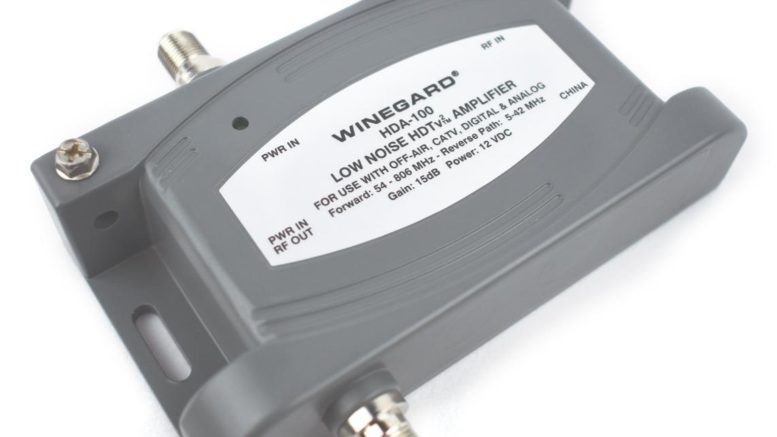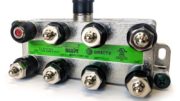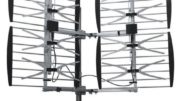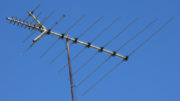Let’s say you’re having reception problems with your over-the-air antenna. Someone trying to be helpful will probably recommend an amplifier. This isn’t a bad bet, but it’s not the one-step-fix-all that it might have been a generation ago. Today you have to understand a little bit about digital signals.
At some level, an amplifier is an amplifier.
We can break television amplifiers into one of three categories. Preamplifiers are intended to be used near the antenna, and provide low-noise boost to help the signal get over a long run into the buildings. Launch amplifiers, which are far more common in cable TV than in TV antennas, are intended to give signals a super-boost so they can go long distances. And finally, distribution amplifiers are intended to help you overcome the losses that come with splitting a signal. This is a very rough and very quick definition,
If you use a preamplifier or a launch amplifier where you should be using a distribution amplifier, it’s not like the amplifier police are going to come down and take away your television. But, if you’re really looking for the right tool for the job, you’ll need to know if you need a distribution amplifier.
Let’s talk distribution amplifiers.
A distribution amplifier has one purpose in life. You see, when you split a signal, you always lose signal strength. If you are deep into science, think of the first law of thermodynamics: energy cannot be created or destroyed. So if you split a signal 8 ways, each line carries only 1/8 of the signal strength of the original. The purpose of a distribution amplifier is to compensate for that by converting raw electrical energy from a wall socket into additional signal.
Unlike a preamplifier, which is often rated for outdoor use and is used primarily to make up for long cable runs from the antenna, distribution amplifiers are mostly used indoors and are not used unless you need to split a signal. They tend to be a little more “noisy” than preamplifiers, and while noise isn’t a good thing, it’s a little less worrisome when you’re talking about overcoming loss from splitters than it is when worrying about longer cable runs.
About noise…
Broadly speaking, everything you want to travel down a line is “signal” and everything else is “noise.” Everyone innately understands the difference between signal and noise. I tend to put it this way. A person speaking, that’s signal. The room they’re in, that’s noise. If it’s a quiet room, they can speak quietly and you can still hear them. If it’s a noisy club, they will need to speak up to be heard. At some point no matter how loud they speak, they won’t be able to overcome the noise of the room.
Noise in a line comes from the line itself, because it’s not perfect. It comes from outside radiation sometimes. It also comes from every connection point. Every splitter adds noise. Every connector does too. For the most part that’s unimportant. All that’s important is that you can keep boosting the signal so there’s more signal than noise. At some point that’s impossible.
Using a distribution amplifier
A distribution amplifier like the one at the top of this article is rated at 15dB with a noise figure of 3dB. Now here are two concepts that I’ve explained in other articles. dB, or decibels, are just a fancy way of expressing multiples or fractions. Noise figure is the result of some fancy math. What it really means is, this is how much noise the thing adds.
Looking at this amp, it adds 15dB signal and 3dB noise. That nets out to 12dB of added signal over the noise floor. I know I’m tossing around a lot of stuff here, but just stay focused on the main idea here. An 8-way splitter tends to create about 14dB of loss and about 1dB of noise. So there’s a need to overcome 15dB total, but 1dB of it is in the noise floor. We don’t care as much about how much noise there is, as long as we have enough room for signal.
So what we’re saying is, this amplifier reduces the amount of loss from 14dB to 2dB, meaning that there’s really only a small impact to the usable signal. And that’s the whole point.
Just don’t overamplify
You can have more than one amplifier in your setup, but be careful — overamplifying can damage your TV’s tuner and even if it doesn’t, it’s going to cause more problems than it solves. A distribution amplifier is never going to make your signal better than it was at the antenna, it’s just going to deal with the splitting and cable runs that you’re putting in after the antenna. In general amplifiers have very little effect on digital signals, only really having an effect on marginal signals. They won’t take a signal that’s good and make it better.
If you’re confused about amplifiers and you’re looking for some advice, give the helpful people at Solid Signal a call at 888-233-7563. They’ll help you choose the right one for your needs!





